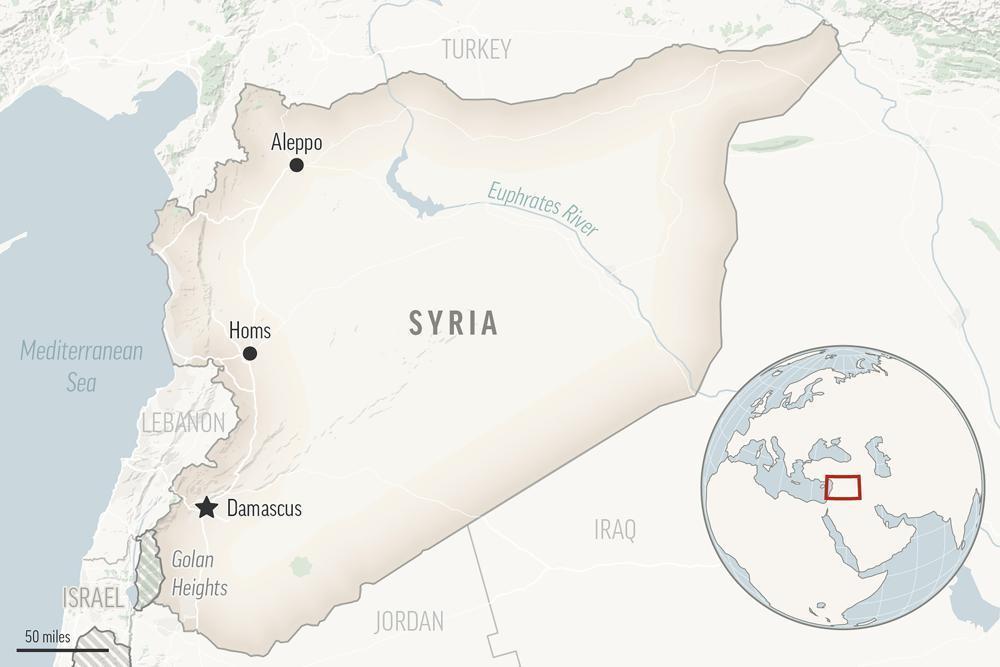
U.S. military airstrikes in eastern Syria were a message to Iran and Tehran-backed militias that targeted American troops this month and several other times over the past year, the Pentagon said Wednesday.
Colin Kahl, the undersecretary of defense for policy, told reporters that the U.S. airstrikes overnight on facilities used by militias backed by Iran’s paramilitary Revolutionary Guard demonstrated that “the United States will not hesitate to defend itself against Iranian and Iran-backed aggression when it occurs.”
He said the U.S. decision to launch the strikes was based on both the nature of the militia attacks on Aug. 15 at the al-Tanf Garrison, where U.S. troops are based in the south, and the fact that, based on recovered drone parts, “we believe we have Iran dead to rights on attribution.”
Hours after the U.S. strikes, two U.S. military locations in northeastern Syria near large oil and gas fields were hit with rocket fire. According to U.S. Central Command, the rockets hit near Green Village and the Conoco gas field in Deir el-Zour. One U.S. service member was treated for a minor injury and has been returned to duty, and two others were under evaluation for minor injuries. CENTCOM said U.S. forces responded by destroying three vehicles and equipment used to launch some of the rockets, killing “two or three suspected Iran-backed militants.”
The opposition war monitor the Syrian Observatory for Human Rights and Deir Ezzor 24 said the U.S. airstrikes targeted the Ayash Camp run by the Fatimiyoun group made up of Shiite fighters from Afghanistan. The war monitor reported that at least six Syrian and foreign militants were killed in the airstrikes, while Deir Ezzor 24 reported 10 deaths.
Deir el-Zour is a strategic province that borders Iraq and contains oil fields. Iran-backed militia groups and Syrian forces control the area and have often been the target of Israeli war planes in previous strikes.
In Iran, Foreign Ministry spokesman Nasser Kanaani issued a statement condemning the American strike “against the people and infrastructure of Syria.” He denied Iran had any link to those targeted.
Iran routinely denies arming militia groups that target U.S. forces in the region, despite weaponry linking back to them.
Kahl said the U.S. strikes underscore that while the U.S. continues to pursue negotiations with Iran to resume its compliance with the 2015 nuclear deal, those talks are not connected at all to America’s willingness to take against when attacked.
“The threats that they engage in against our people in the region or elsewhere, are not linked to wherever we end up on the nuclear deal,” said Kahl. “It actually has nothing to do with our willingness and resolve to defend ourselves. And I think the strike last night was a pretty clear communication to the Iranians that these things are are all on different tracks.”
CENTCOM said the U.S. strikes “took proportionate, deliberate action intended to limit the risk of escalation and minimize the risk of casualties.” It did not identify the targets or offer any casualty figures from the strikes, which the military said came at the orders of President Joe Biden.
“Today’s strikes were necessary to protect and defend U.S. personnel,” Central Command spokesman Col. Joe Buccino said in a statement.
Kahl said the militia’s coordinated attack on two U.S. facilities at al-Tanf at the same time this month fueled concerns that “Iran intends to do more of this and we wanted to disabuse them of any sense that that was a good idea.”
He said the U.S. initially identified 11 bunker targets at the site and ended up striking nine because there was evidence there may be people near two of the locations and the goal was not to cause casualties.
The U.S. Treasury said the Fatimiyoun group has fought numerous battles in Syria, and is led by Iran’s elite Quds Force of the Revolutionary Guard.
“The Ayash warehouse is a very important one for Iran’s militias,” Deir Ezzor 24 CEO Omar Abu Layla told The Associated Press. “We expect that Iran will respond, either in al-Tanf or possibly in Iraq.”
In the Aug. 15 attack, drones allegedly launched by Iranian-backed militias targeted the al-Tanf Garrison used by American forces. Central Command described the assault as causing “zero casualties and no damage” at the time.
There was no immediate acknowledgement by Syria’s state-run media of the strikes hitting Deir el-Zour.
U.S. forces entered Syria in 2015, backing allied forces in their fight against the Islamic State group.